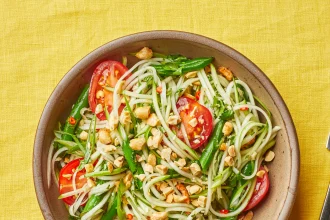When people hear “Chiang Mai,” they picture golden temples, buzzing night markets, maybe a lantern or two floating into the sky. But what happens when you show up during the so-called “Green Season,” that stretch from June to August when the rains roll in and the tourist crowds thin out? Is it as magical as the travel blogs say, or are they just trying to fill hotel beds during the off-season?
Let’s get real about Chiang Mai in the rainy season: the good, the bad, and the soggy.
When Is the Green Season?
it
In Chiang Mai, the Green Season typically runs from June through August. This is when the monsoon rains arrive, turning the landscape vibrant and lush, but also bringing higher humidity, daily showers, and fewer tourists.
Why Even Bother Visiting During the Green Season?
On paper, the “Green Season” sounds like a secret hack. The mountains glow green, rice paddies actually look like those Windows desktop wallpapers, and the waterfalls finally earn their hype. Rain usually comes in hard, fast bursts, mostly late afternoon or overnight, so you’ll get some clear mornings. Plus, with fewer tourists, you might actually get a photo at Wat Phra Singh without someone’s selfie stick in the frame.
But here’s the flip side: “Green Season” is basically a nice way of saying “expect rain, mud, and the constant threat of your laundry never drying.” Some days you’ll luck out with blue skies, others you’ll be dodging puddles and hauling around a wet poncho. Humidity is relentless and, if you’re not careful, so are the mosquitoes.
What’s Actually Better During the Wet Months
The Waterfalls Are Legit
If you want to see Chiang Mai’s waterfalls at their best, this is it. Bua Tong (the “Sticky Waterfall”) is a fun climb, Mae Sa thunders down in full force, and if you trek out to Doi Inthanon National Park, Mae Ya and Vachiratharn are straight-up roaring. Just check local conditions, because sometimes heavy rain means trails are closed or slippery, and flash floods are a real risk.
The Scenery Gets a Glow-Up
Doi Suthep’s temple looks even more dramatic against a backdrop of stormy clouds, and Mon Jam’s mountain views are all misty and mysterious. The drive up to Pai is gorgeous, if you’re not white-knuckling it through rain-slick roads.
Fewer People, More Space
You’ll notice the difference at the temples, in the Old City, and especially at the night markets. No fighting through crowds, no hour-long waits for a bowl of khao soi. But don’t expect a ghost town, because weekends and festivals still bring in plenty of visitors.
Cheaper Everything
Hotels, flights, and tours are usually discounted. If you’re budgeting, this is about as affordable as Chiang Mai gets.
What the Travel Blogs Don’t Tell You
Rain Isn’t Always Predictable
Some years, the “afternoon showers” turn into full days of drizzle or downpours that mess with your plans. Trails close, power can go out, and certain national parks might shut down parts of their grounds. Always have a Plan B that involves coffee shops or indoor markets.
Mosquitoes and Health Risks
More rain means more standing water, which means more mosquitoes and a higher risk of dengue fever. Bring repellent, and actually use it, especially at dawn and dusk. Long sleeves aren’t a bad idea, either.
Scooter Safety
Scooter rentals are popular, but the roads get slick and accidents spike during rainy months. If you’re not experienced, consider alternatives like grabbing a songthaew or taxi instead.
Mud, Leeches, and Other Realities
If you’re headed to the mountains or jungle trails, be ready for mud, slick paths, and the occasional leech. A waterproof bag for your gear is a lifesaver, and quick-drying clothes will dry…eventually.
Ethical Elephant Encounters: Do Your Homework
You’ll see lots of “ethical” elephant sanctuaries advertised, but not all are created equal. Look for places with no riding, no performances, and a focus on elephant welfare. Check recent reviews, not just marketing claims.
Tips to Survive (and Maybe Love) the Green Season
- Pack for Rain: Lightweight, quick-drying clothes, a legit rain jacket, and sandals you don’t mind getting wet. Forget rain boots, water drains fast, and you’ll be taking your shoes off a lot at temples anyway.
- Stay Flexible: Weather shifts fast, so don’t over-plan. If a storm hits, treat it as an excuse to try a new café or catch up on your reading.
- Protect Your Tech: Always have a waterproof pouch or bag for your phone and camera.
- Respect the Weather: Don’t push your luck with flooded trails or rivers. If locals say it’s closed, listen.
Final Word
Is Chiang Mai in the Green Season worth it? It depends on your vibe. If you want predictable sunshine and easy sightseeing, stick to the cool season. But if you’re after dramatic scenery, better deals, and a less touristy experience, and don’t mind getting a little wet, this might be your favorite time to visit.
Just don’t let anyone tell you it’s all rainbows and empty temples. Pack a raincoat, keep your expectations realistic, and you’ll probably have some of your best travel stories yet.
Read more: Chinese Architecture: Key Features, Cultural Significance, and Styles









